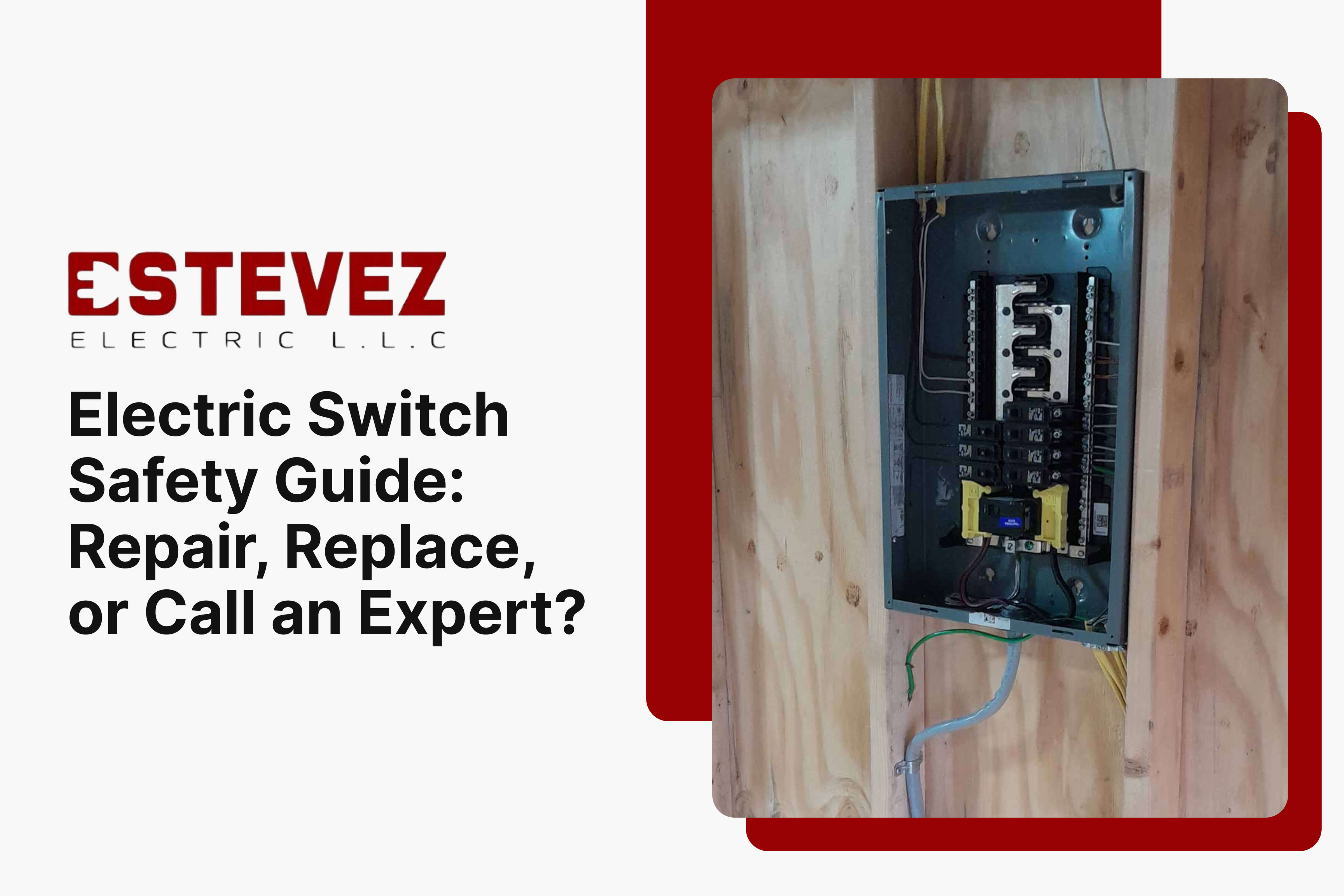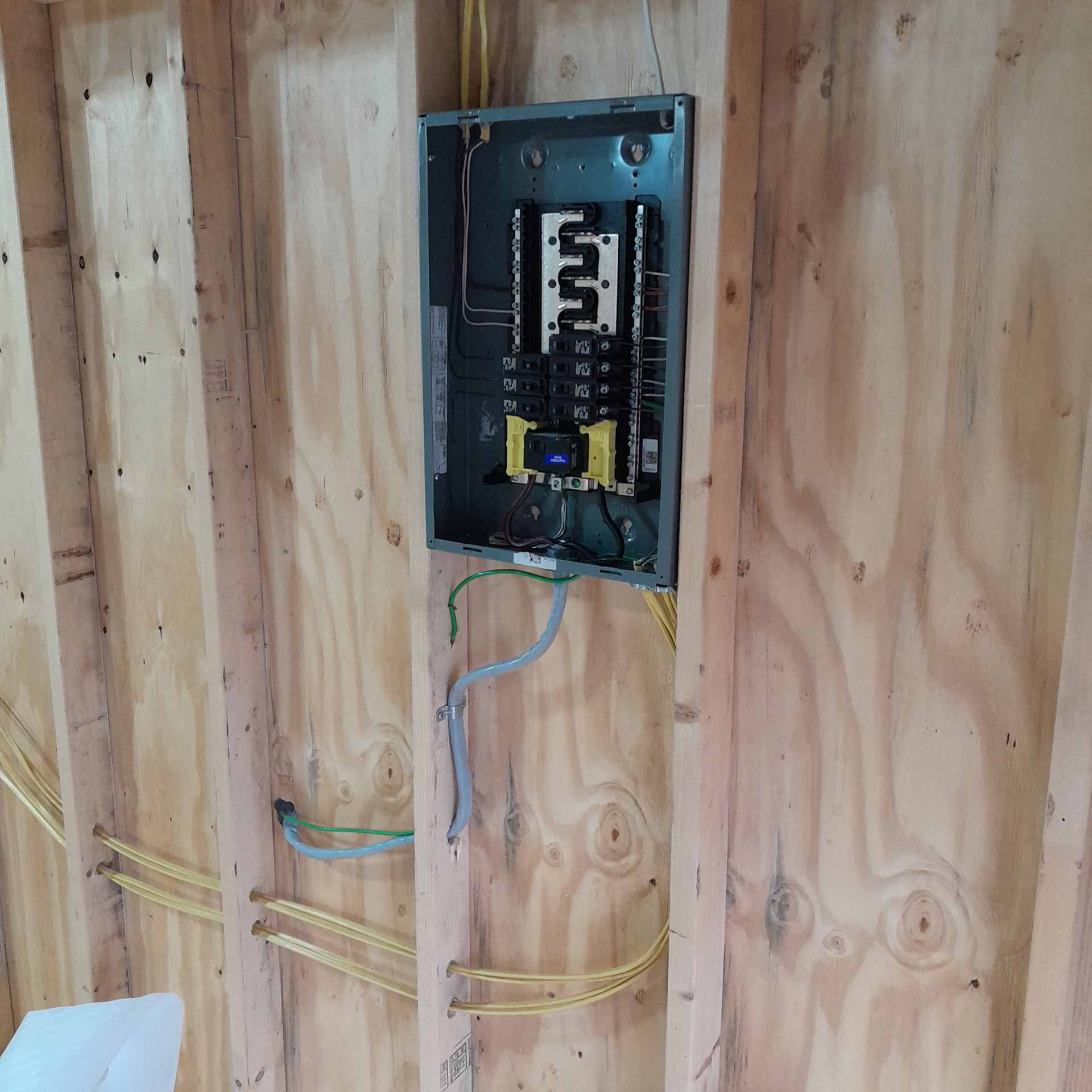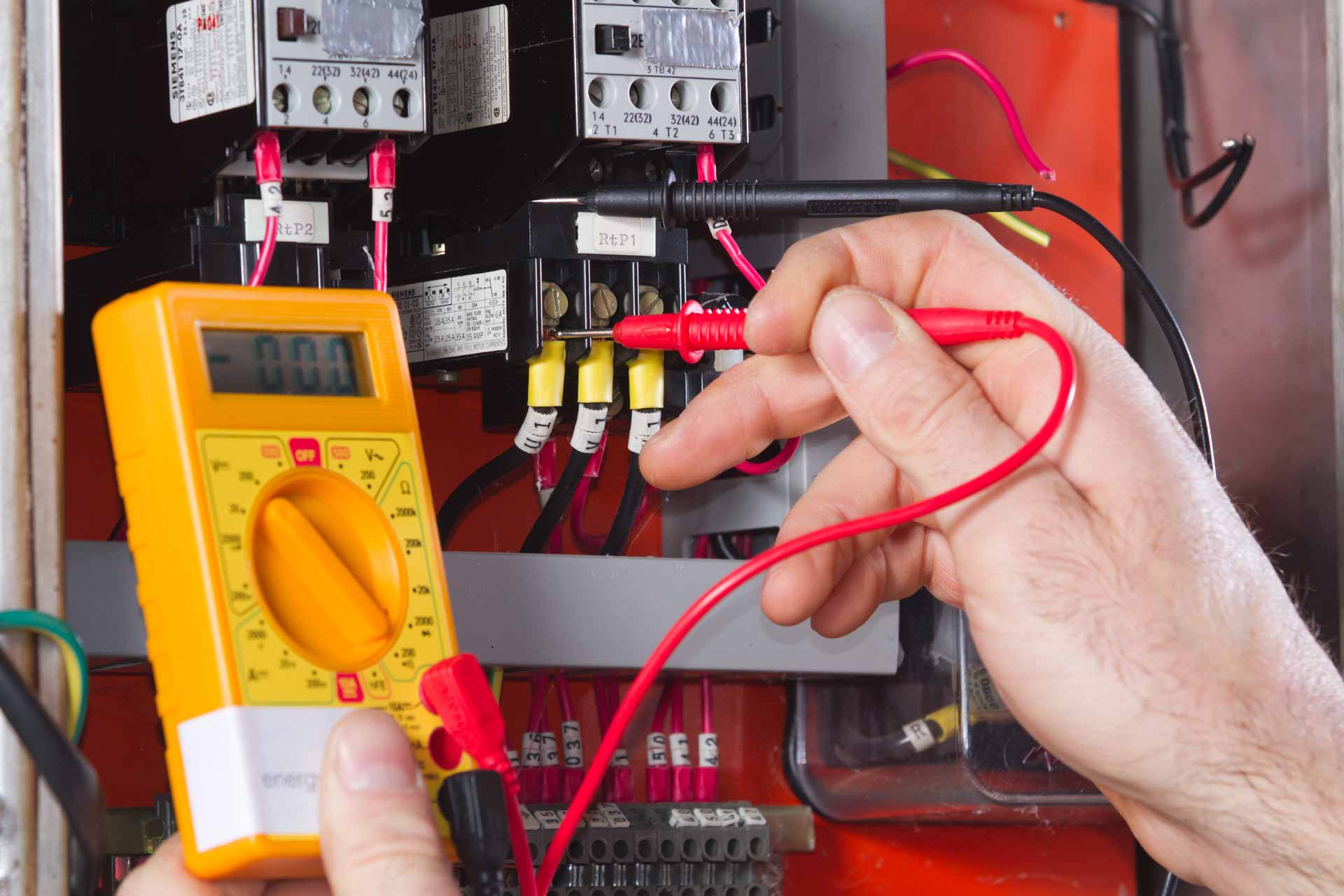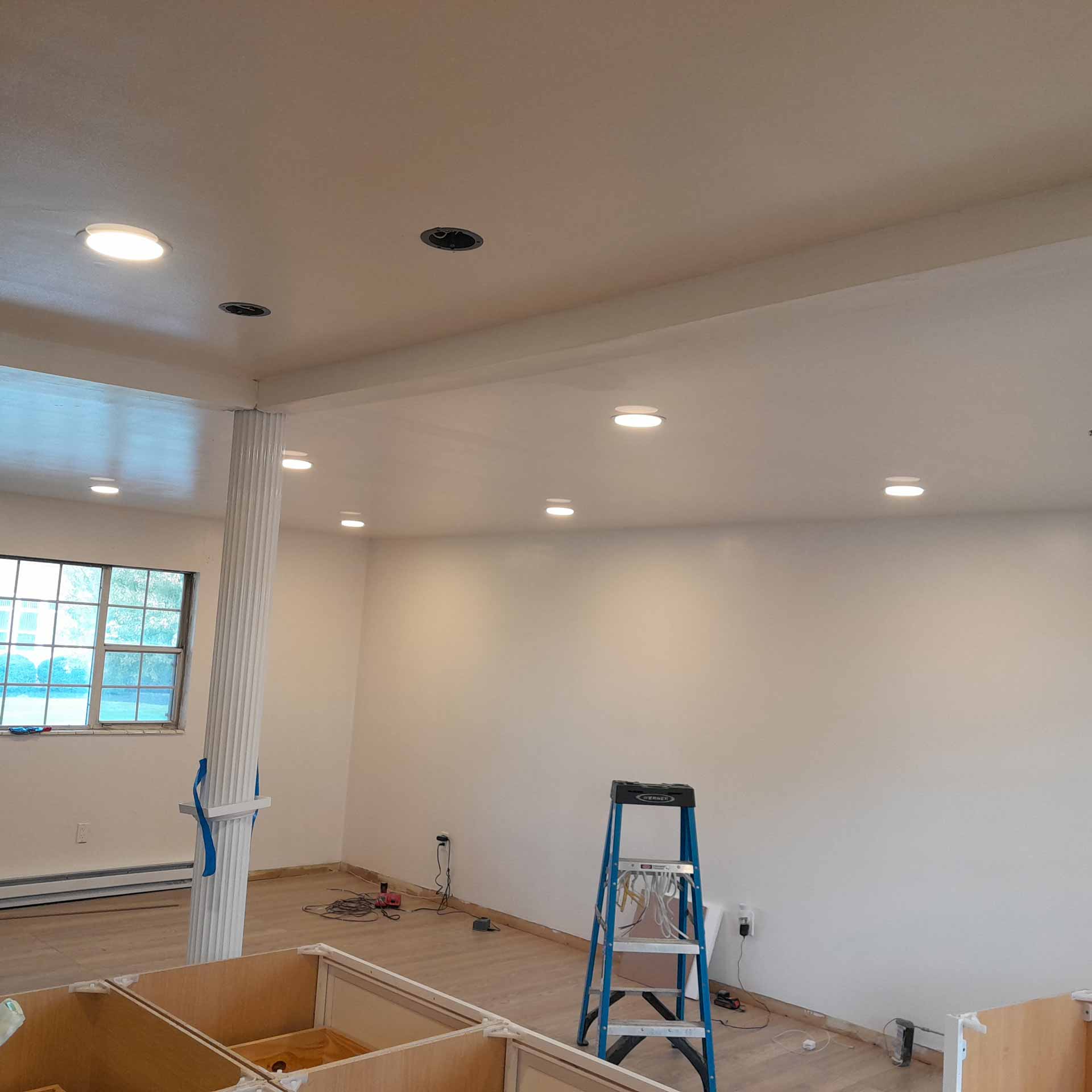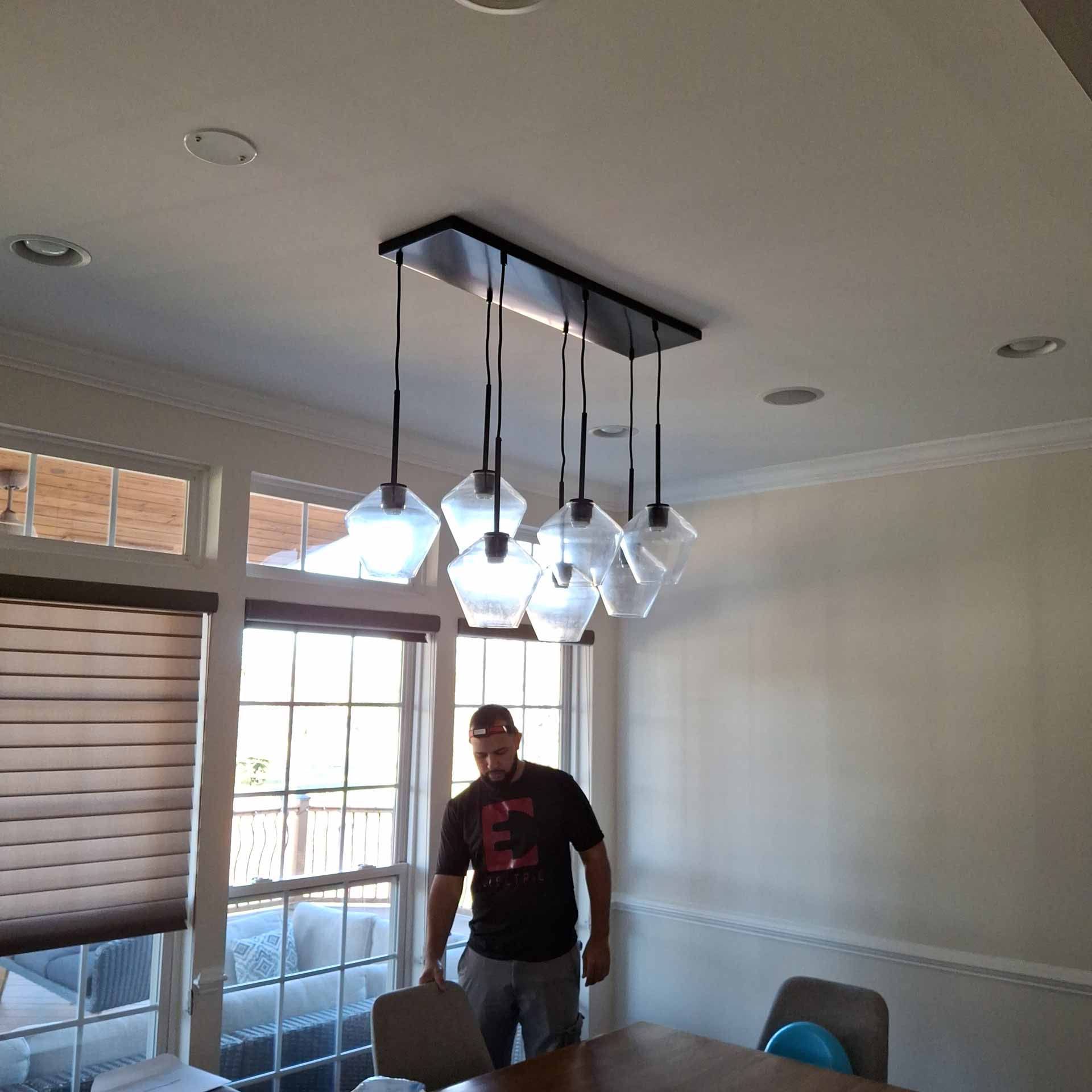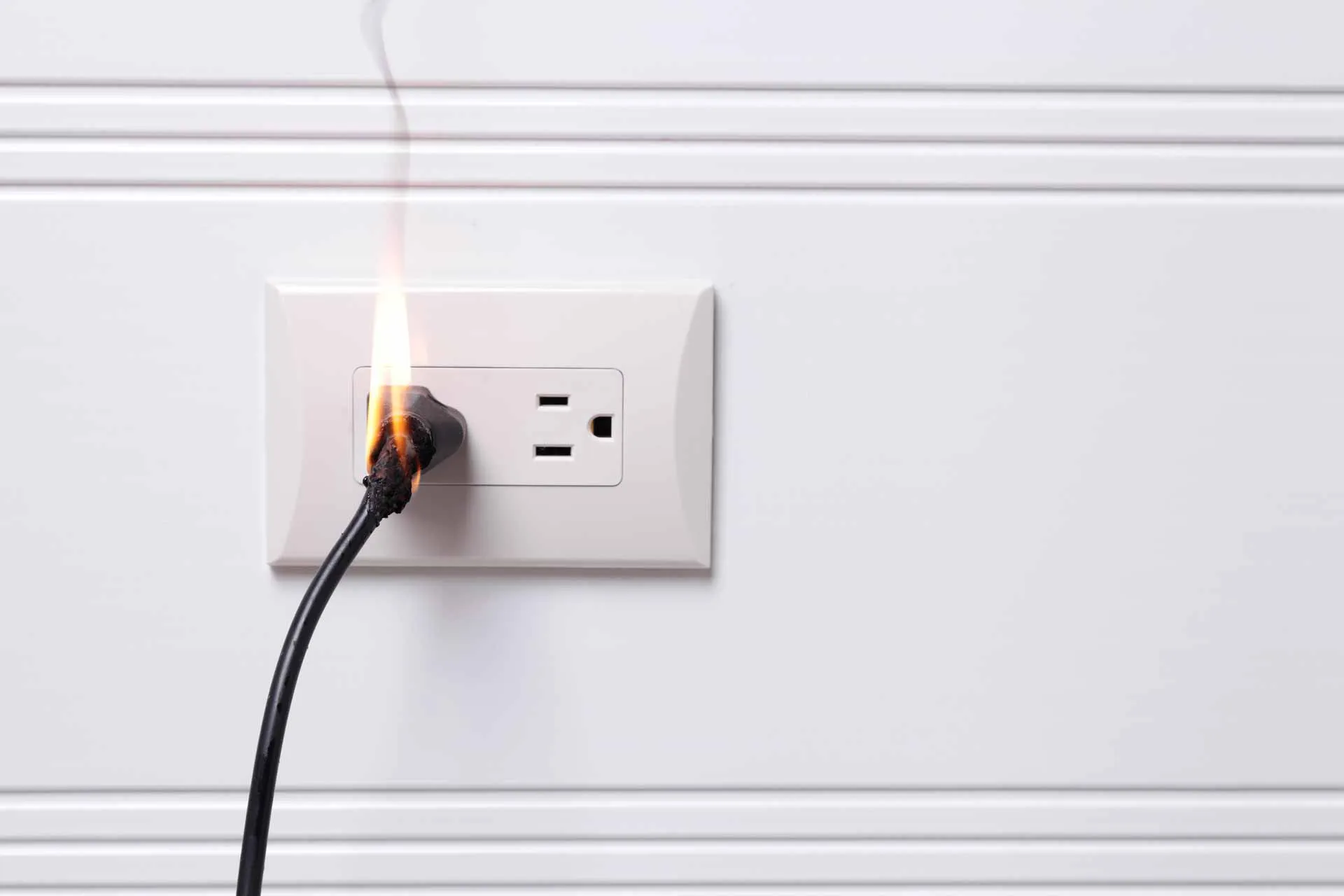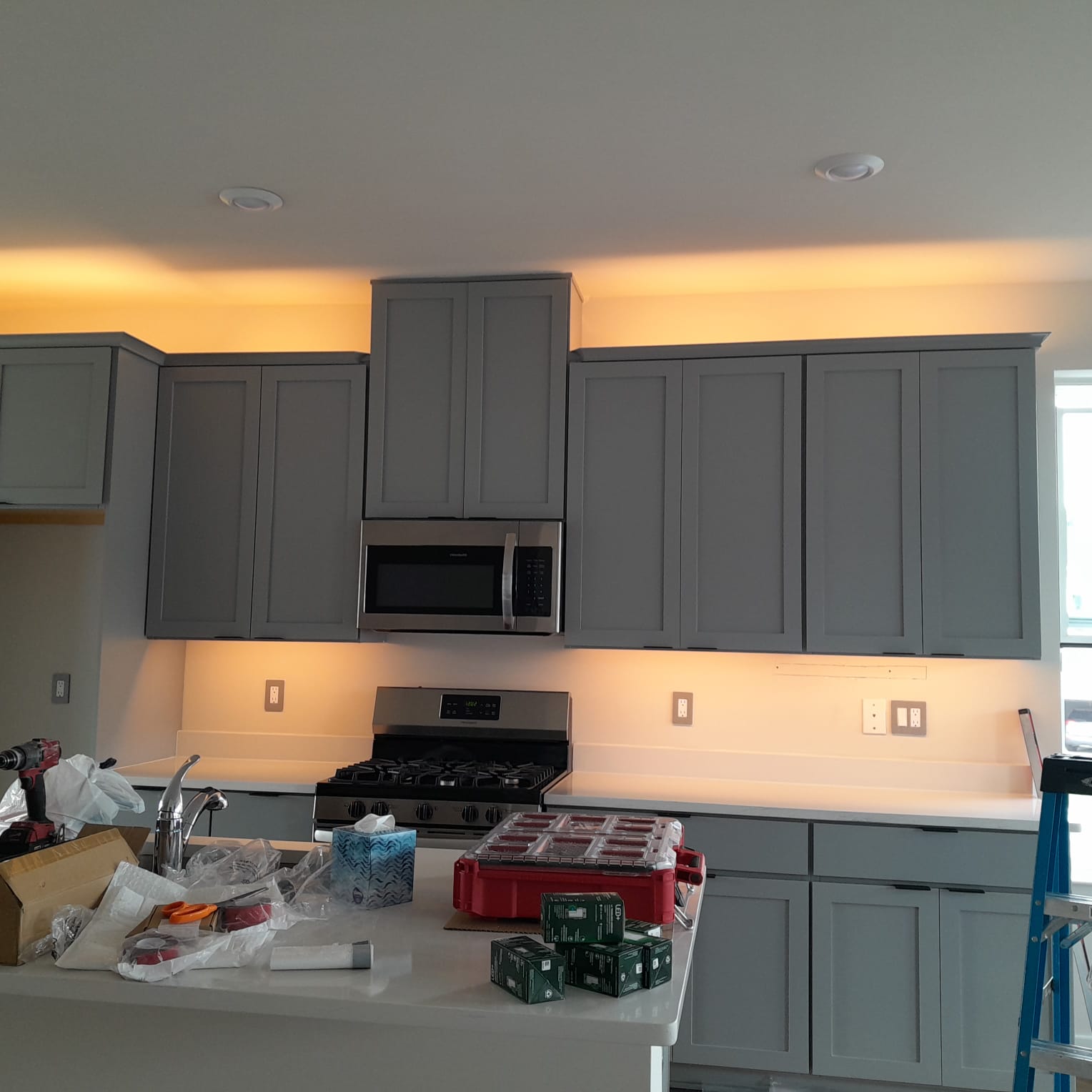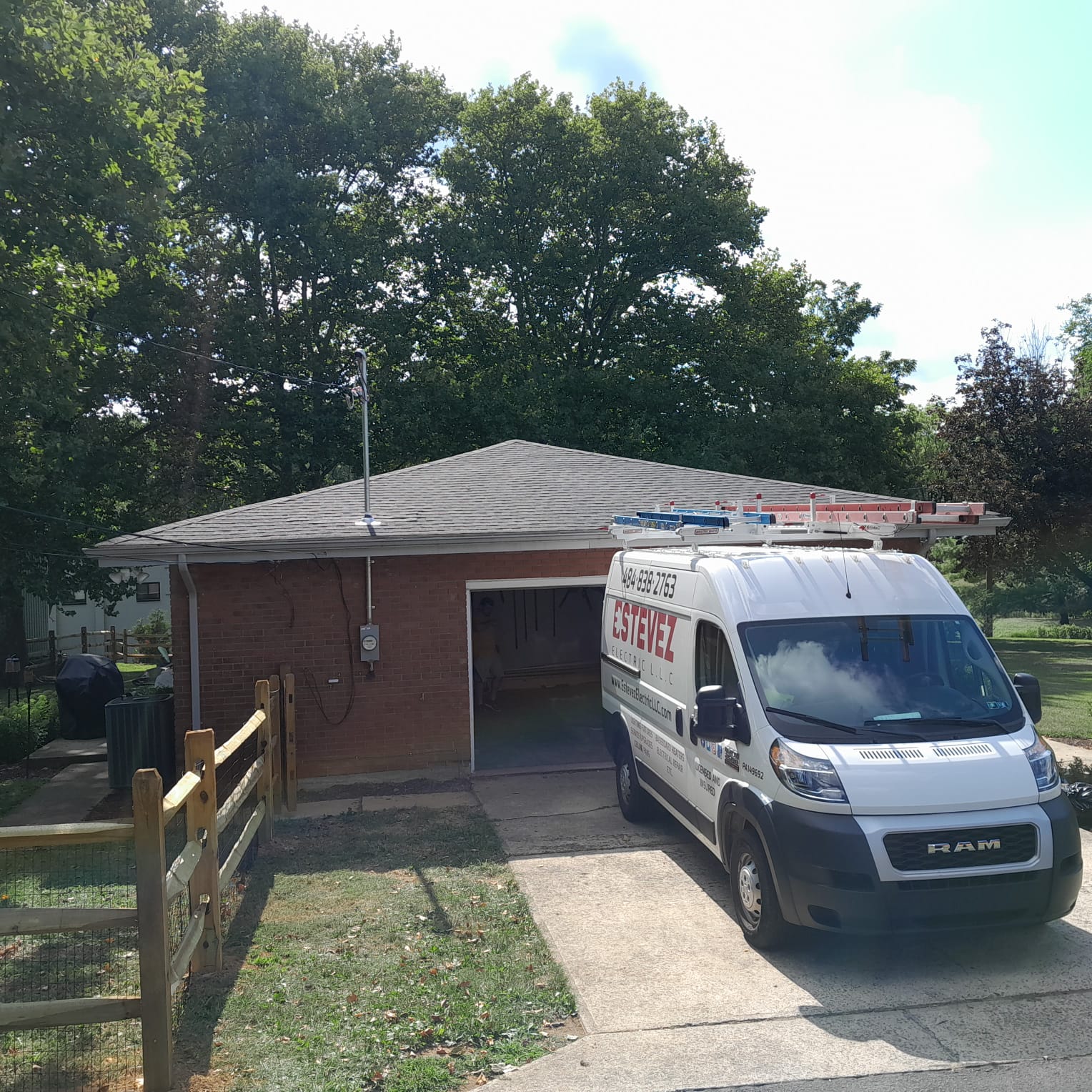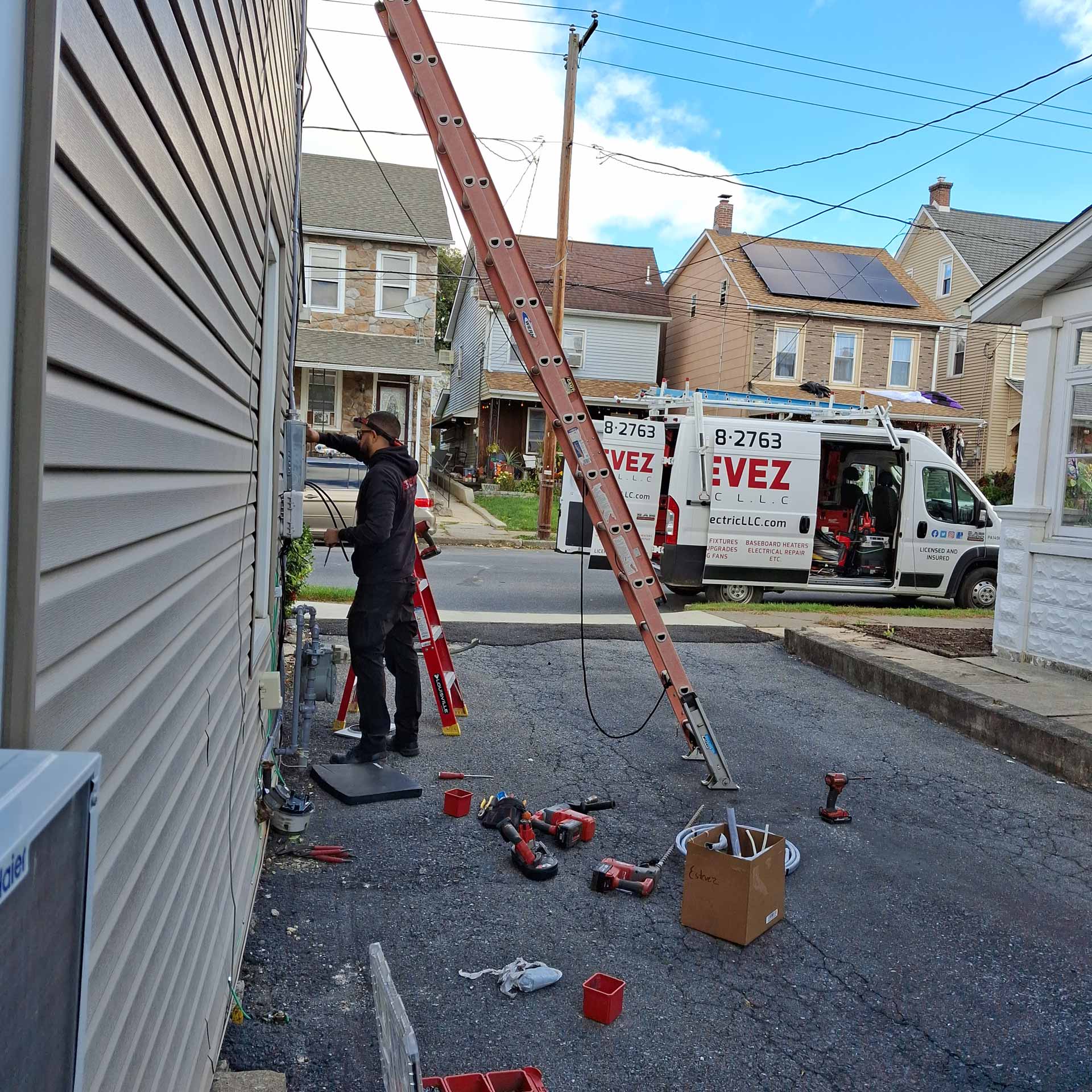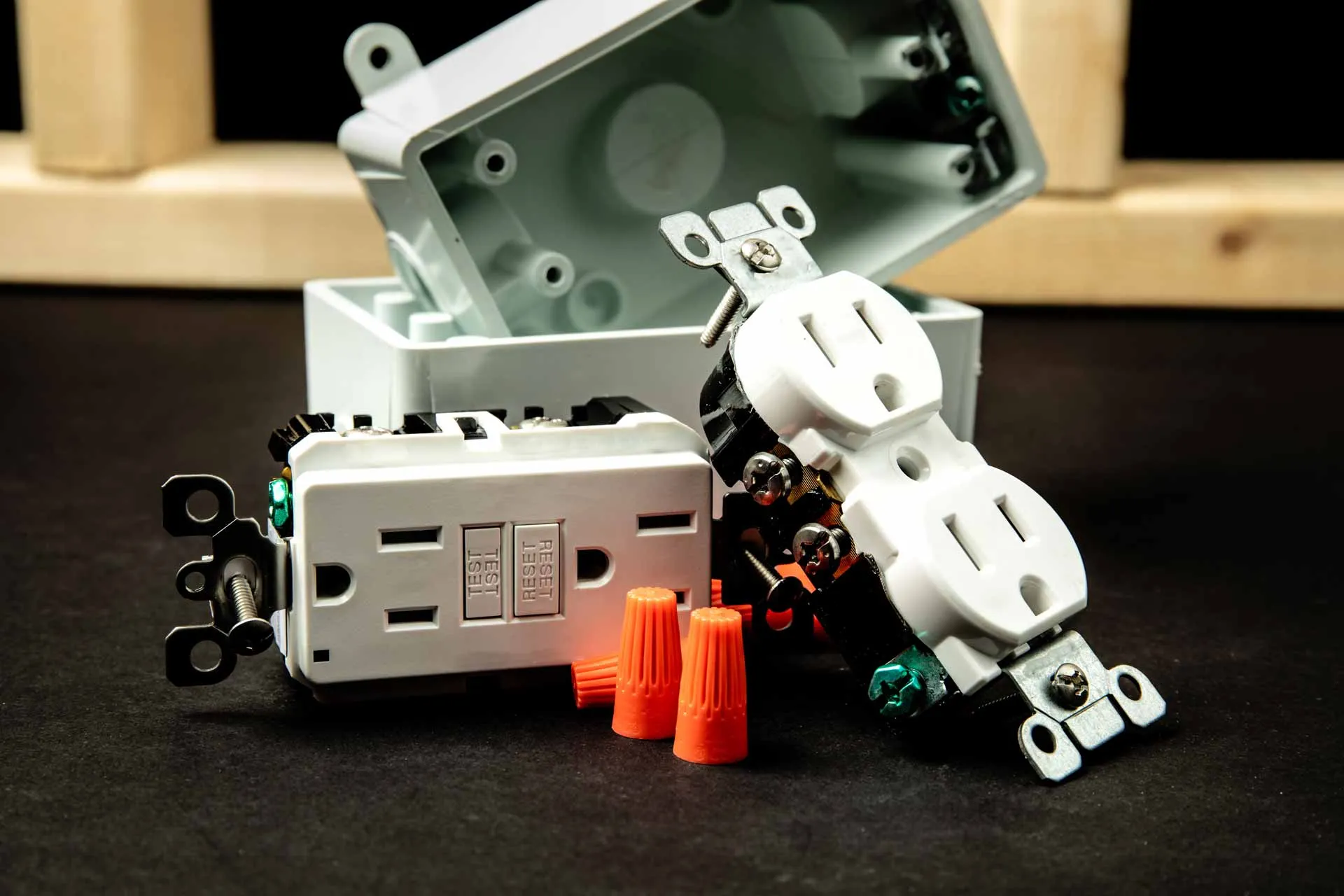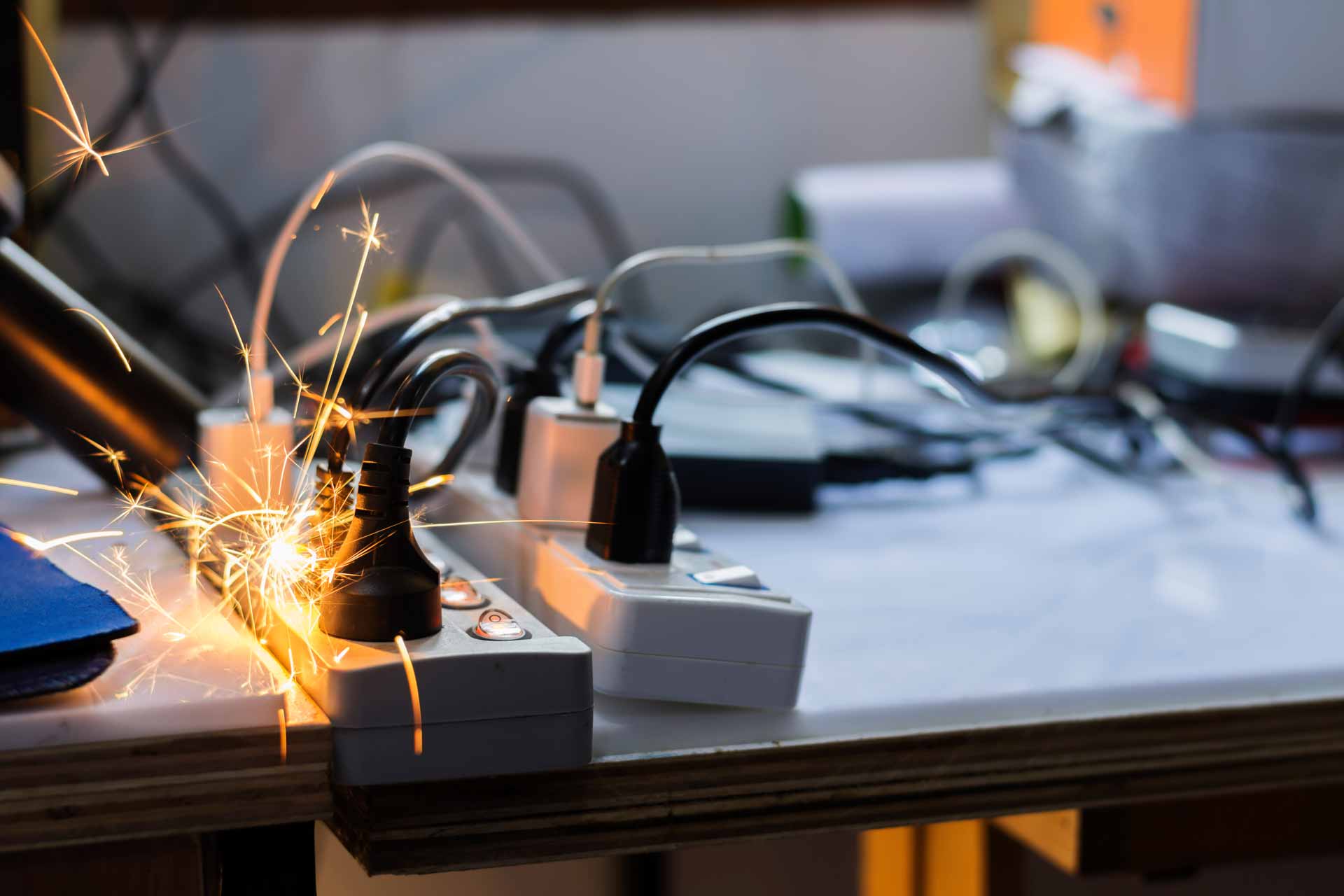Key Takeaways
- Always turn off power at the circuit breaker before attempting any switch repair
- Common switch issues include flickering lights, hot switches, and unresponsive controls
- Professional electricians should handle complex electrical problems
- Regular maintenance can prevent hazardous electrical situations
- Modern switch upgrades improve both safety and energy efficiency
- Proper troubleshooting can help identify the root cause of electrical problems
- DIY repairs are only appropriate for simple switch replacements with proper safety precautions
- Specialized switches like dimmers and smart switches require specific installation knowledge
- Electrical code compliance is essential for home safety and insurance coverage
- Early intervention for switch issues can prevent more costly electrical problems
Introduction to Electric Switch Problems
Electrical switches are essential components in every home, controlling lighting and power to various fixtures and appliances. Despite their seemingly simple operation, switches can develop problems over time due to wear and tear, improper installation, or electrical surges. When switches start to fail, they can cause annoying problems like flickering lights or even create dangerous situations that could lead to electrical fires. Understanding the warning signs of switch failure is critical for maintaining a safe and functional electrical system throughout your home.Most homeowners don’t think about their light switches until something goes wrong. You might notice that you have to flip a switch multiple times before a light turns on, or maybe you hear a strange buzzing sound when you use a particular switch. These are all signs that your switch might need repair or replacement. Understanding the basics of electric switch repair can help you determine when it’s safe to fix things yourself and when you should call for professional electrical repair services. Electrical systems are complex networks that require proper maintenance to function safely and efficiently over the long term.
In this guide, we’ll walk you through common switch problems, troubleshooting techniques, safety precautions, and when to seek professional assistance for your electric switch repair needs. By recognizing early warning signs and understanding proper repair protocols, you can protect your home from electrical hazards while ensuring reliable operation of your lighting and electrical systems for years to come.
Common Electric Switch Problems and Their Causes
Before you can fix a switch problem, you need to know what’s causing it. Here are some common issues homeowners face with their electrical switches, along with the underlying causes that typically lead to these problems. Recognizing these patterns can help you address issues more effectively and prevent future occurrences.1. Flickering Lights
If your lights flicker when you use a particular switch, this is often one of the first signs something’s wrong. Flickering lights aren’t just annoying – they can indicate a serious electrical problem that might worsen over time if not addressed promptly. This common issue can stem from various causes within your electrical system.Common causes of flickering lights include:
- Loose wire connections inside the switch that create intermittent electrical contact
- Worn-out switch mechanisms that don’t make proper contact, causing the circuit to break momentarily
- Incompatible dimmer switches with LED bulbs, which can create pulsing or flickering effects
- Overloaded circuits that can’t consistently deliver the required power to all connected devices
- Problems with the electrical panel that affect power distribution throughout your home
- Voltage fluctuations from the utility company or from large appliances cycling on and off
- Corroded wire connections that increase electrical resistance and create unstable power flow
If you notice persistent flickering, it’s worth scheduling a professional electrical inspection to find out what’s really going on. Electrical professionals have specialized tools to measure voltage fluctuations and identify the exact source of the problem, which might be located far from the actual flickering light.
2. Hot or Warm Switches
Have you ever touched a light switch and noticed it feels warm or even hot? This is a warning sign that shouldn’t be ignored as it often indicates a serious electrical issue that could potentially lead to a fire hazard if left unaddressed.Hot switches typically result from:
- Too much electricity flowing through the switch (beyond its rating), often due to connecting high-power appliances to circuits designed for lighting
- Poor wire connections creating resistance and heat, which can gradually worsen over time
- Aging switch components that are failing and creating internal resistance
- Improper installation where wires aren’t securely connected or are incorrectly wired
- Water damage that has compromised the switch’s internal components
- Dust and debris buildup inside the switch housing that prevents proper heat dissipation
- Switches installed in enclosed spaces without adequate ventilation
A hot switch is a serious fire risk and should be checked by a qualified electrician right away. The heat generated by electrical resistance can eventually damage wire insulation and potentially ignite surrounding building materials, creating a dangerous fire hazard that could spread rapidly through your home’s walls.
3. Unresponsive or Intermittent Switches
If you have to flip a switch multiple times to get a light to turn on, or if it works sometimes but not others, the internal mechanism is likely failing. This frustrating issue often worsens gradually over time until the switch stops working completely.Common causes include:
- Worn-out internal parts that have deteriorated after thousands of on/off cycles
- Dust and dirt buildup inside the switch that interferes with the mechanical contacts
- Loose wire connections that create intermittent electrical contact
- Water damage that has corroded internal components
- The switch has simply reached the end of its life after years of regular use
- Manufacturing defects that cause premature failure
- Excessive current draw that has damaged the switch’s internal mechanisms
Most switches with intermittent problems need to be replaced rather than repaired, since the internal parts are sealed and can’t be fixed. Attempting to continue using a failing switch can lead to further electrical problems and potentially create safety hazards in your home’s electrical system.
Safety Precautions Before Attempting Switch Repair
Safety must come first when dealing with anything electrical. Even a simple switch repair can be dangerous if you don’t take the right precautions. Electricity poses serious risks including shock, burns, and fire hazards that require proper safety protocols to mitigate effectively.Essential Safety Steps:
- Turn Off Power: Always shut off power at the circuit breaker before working on any electrical component. Don’t just turn off the switch – that’s not enough! Locate the correct circuit breaker that controls the switch you’re working on and switch it to the OFF position. If you’re unsure which breaker controls the circuit, turn off the main breaker to cut power to the entire house.
- Verify Power is Off: Use a voltage tester to make sure no electricity is flowing to the switch. This is a critical step that many people skip. Even after turning off what you believe is the correct breaker, always test the wires at the switch location to confirm there’s no power. Non-contact voltage testers are inexpensive tools that can detect electricity without making direct contact with wires.
- Use Proper Tools: Make sure you have insulated tools designed for electrical work. Regular tools can conduct electricity and cause shocks. Screwdrivers and pliers with rubber-coated handles provide additional protection against electrical shock. Never use metal tools with damaged insulation when working with electrical components.
- Work in Dry Conditions: Never work on electrical systems in wet areas or with wet hands. Water and electricity are a dangerous combination that significantly increases shock risk. Ensure the work area is completely dry, and avoid working on electrical systems during high humidity or immediately after cleaning the area.
- Know Your Limits: If you’re unsure about any part of the repair, contact a professional electrician. It’s better to be safe than sorry. Electrical work requires specific knowledge and skills, and attempting repairs beyond your expertise can lead to serious safety hazards and code violations.
DIY Switch Repair: When It’s Appropriate
While we recommend calling a professional for most electrical issues, there are some simple switch problems that experienced homeowners can safely fix themselves. Understanding when DIY repair is appropriate can save you time and money while ensuring your home remains safe.Appropriate DIY Switch Repairs:
- Simple Switch Replacement: If you’re replacing a standard single-pole switch (the kind that just turns something on or off) with an identical model, this is often manageable for homeowners with basic electrical knowledge. These switches typically have straightforward wiring with just two or three wires to connect. Before removing the old switch, take a photo of the wire connections to ensure you replicate them correctly with the new switch.
- Tightening Loose Connections: Sometimes, a switch works intermittently because the terminal screws are loose. After turning off power, you can carefully tightening these connections. Use a properly sized screwdriver and ensure the wires are securely wrapped around the terminal screws in a clockwise direction. This simple maintenance can often resolve flickering issues without requiring complete switch replacement.
- Cleaning Dust and Debris: Accumulated dust can affect switch performance. After disconnecting power, you can carefully clean accessible parts. Remove the switch plate and gently clean around the switch mechanism with a dry cloth or compressed air. Never spray cleaning products directly onto electrical components, as the moisture can cause damage or create safety hazards.
Tools You’ll Need:
- Screwdrivers (flathead and Phillips) with insulated handles for electrical safety
- Voltage tester to verify power is off before beginning work
- Wire strippers for preparing wire ends if replacement is needed
- Needle-nose pliers to bend and position wires properly
- Electrical tape to insulate connections and prevent shorts
- Replacement switch (if needed) of the correct type and rating for your application
- Work gloves to protect your hands during the repair process
- Flashlight or headlamp for better visibility in dark switch boxes
Proper preparation and safety awareness are crucial for any DIY electrical work. Before beginning any electrical project, familiarize yourself with basic wiring principles and always follow manufacturer instructions for any components you’re installing. If you encounter unexpected wiring configurations, multiple switches controlling the same fixture, or any situation that seems complex, it’s best to consult with a professional rather than risk improper installation.
When to Call a Professional Electrician
While simple switch replacements might be suitable for DIY, many electrical issues require professional expertise. Here are situations where you should definitely call a licensed electrician to ensure safety and proper repairs that meet electrical code requirements.Scenarios Requiring Professional Help:
- Multiple Failing Switches: If several switches are failing at the same time, this points to a bigger electrical problem. This pattern often indicates issues with your home’s electrical system rather than individual switch failures. A professional can diagnose underlying problems such as voltage fluctuations, overloaded circuits, or panel issues that might be affecting multiple components simultaneously.
- Burning Smells or Discoloration: These are signs of dangerous overheating that needs immediate professional attention. Discolored switch plates, scorched outlets, or burning odors indicate that electrical components are operating at unsafe temperatures. This situation requires urgent professional intervention as it presents an immediate fire hazard that could endanger your home and family.
- Sparks or Buzzing: Any sparking or buzzing from switches indicates a serious safety hazard. These symptoms suggest arcing electricity, which generates extreme heat and can ignite surrounding materials. A professional electrician has the proper equipment and expertise to safely diagnose and repair these dangerous conditions without risking personal injury or property damage.
- Complex Switch Types: Specialized switches like three-way switches (where two switches control the same light), four-way switches, or smart switches have more complicated wiring. These configurations involve multiple travelers and specific wiring patterns that must be correctly installed to function properly. Improper installation can lead to switches that work erratically or not at all.
- Aluminum Wiring: Homes with aluminum wiring require special handling and expertise. Aluminum wiring, common in homes built between 1965 and 1973, requires special connection methods and compatible devices to prevent overheating. Professional electricians understand the specific techniques required to safely work with aluminum wiring and can install appropriate CO/ALR rated switches.
- Outdated Electrical Panels: If your home has an older electrical panel, even simple switch repairs might reveal bigger system issues. Older panels may have insufficient capacity for modern electrical demands or contain outdated components like fuse boxes or Federal Pacific panels that present known safety hazards. A professional can evaluate your entire electrical system and recommend necessary upgrades.
Types of Switches and Their Specific Repair Considerations
Different types of switches have unique repair considerations. Understanding what type of switch you have can help determine the right repair approach and identify potential complications before they arise during installation or replacement.1. Single-Pole Switches
These are the standard switches that control lights from one location. They’re the simplest type and the easiest to repair or replace, making them suitable for homeowners with basic electrical knowledge.Common Issues:
- Worn-out internal mechanisms after years of regular use
- Loose wire connections that can cause intermittent operation
- Damage from power surges that can fry internal components
- Terminal screws that loosen over time due to thermal expansion and contraction
- Dust accumulation that interferes with proper mechanical operation
- Corrosion on terminals that increases electrical resistance
2. Three-Way and Four-Way Switches
These switches control lights from multiple locations, such as hallway lights that can be turned on or off from both ends of the hallway. Their more complex wiring makes them challenging for DIY repairs.Special Considerations:
- More complex wiring configuration with multiple traveler wires
- Traveler wires must be properly connected to specific terminals
- Requires understanding of switch positions and wire functions
- Improper installation can result in switches that work inconsistently
- Replacement switches must be the correct type (three-way vs. four-way)
- Wire colors may not follow standard conventions in older installations
- Testing procedures are more complex than with single-pole switches
3. Dimmer Switches
Specific Issues:- Compatibility problems with LED bulbs that can cause flickering or buzzing
- Heat buildup requiring proper ventilation and adequate box space
- More sensitive to power fluctuations than standard switches
- May require a neutral wire for installation, especially newer electronic models
- Higher failure rate due to more complex electronic components
- Load rating must match the connected fixtures (LED vs. incandescent)
- Some models require minimum loads to function properly
4. Smart Switches
Modern smart switches present unique challenges due to their electronic components and connectivity requirements:Repair Considerations:
- Require stable WiFi connections for reliable operation
- Often need a neutral wire which may not be present in older homes
- More sensitive to power quality issues like surges and brownouts
- May have app-specific troubleshooting steps for connectivity problems
- Higher power consumption than standard switches (requiring consideration for heat dissipation)
- Firmware updates may be necessary to resolve operational issues
- Compatibility with specific smart home ecosystems must be considered
For specialized switches like GFCI outlets or smart home systems, professional installation and repair are strongly recommended to ensure proper functionality and safety. These advanced devices often require specific installation techniques and testing procedures to verify they’re providing the intended protection and functionality. Improper installation could compromise safety features or result in unreliable operation.
Preventing Switch Problems: Maintenance Tips
Preventive maintenance can extend the life of your electrical switches and prevent safety hazards. Here are some recommended maintenance practices that can help you avoid costly repairs and dangerous electrical situations in your home.Regular Maintenance Practices:
- Listen for Unusual Sounds: Buzzing or crackling indicates loose connections or arcing. Pay particular attention to these sounds when operating switches, as they often precede more serious electrical problems. Even faint buzzing sounds warrant investigation, as they can indicate developing issues within the switch or connected wiring.
- Check for Warmth: Periodically touch switches (when lights have been off) to ensure they’re not warm. Switches should remain at room temperature during normal operation. Any detectable warmth suggests excessive current flow or resistance that could eventually lead to overheating and potential fire hazards.
- Watch for Visible Signs: Discoloration, scorching, or melted plastic requires immediate attention. Regularly inspect switch plates for yellowing or browning, especially around the edges. These visual indicators often appear before more serious problems develop and provide an early warning of potential electrical issues.
- Test Functionality: Switches should operate smoothly without sticking or requiring excessive force. Periodically test all switches in your home, especially those used infrequently. If a switch feels different than usual or requires multiple attempts to operate, this may indicate internal wear that warrants replacement.
- Schedule Professional Inspections: Regular electrical system inspections can identify potential problems before they become serious hazards. Professional electricians can use thermal imaging and other specialized tools to detect overheating or other issues not visible to the naked eye, providing comprehensive preventive maintenance.
- Avoid Overloading: Be mindful of how many high-draw appliances are connected to circuits controlled by a single switch. Understand the amperage rating of your circuits and avoid connecting multiple power-hungry devices to the same circuit. This prevents excessive current flow through switches and reduces the risk of overheating.
Maintenance Schedule Recommendation
- Monthly: Visual inspection of switches for discoloration or damage
- Quarterly: Check for unusual warmth or sounds from switches
- Annually: Professional inspection of electrical system
- Every 15-20 years: Consider upgrading older switches
Upgrading Your Electrical Switches: Modern Options
If you’re repairing switches, it might be a good time to consider upgrades that improve safety, efficiency, and convenience. Modern switch technologies offer significant advantages over older models, providing enhanced functionality and improved electrical safety for your home.Modern Switch Options:
- Smart Switches: Control lighting remotely via smartphone apps or voice assistants. These advanced switches can be programmed to operate on schedules, respond to occupancy, or integrate with broader home automation systems. Many models offer energy monitoring features that help track electricity usage and identify opportunities for conservation.
- Motion-Sensing Switches: Automatically turn lights on when someone enters a room and off when the space is vacant. These switches are particularly useful in areas like laundry rooms, garages, and bathrooms where hands are often full or lights are frequently left on. Advanced models offer adjustable sensitivity and timing to customize operation for specific spaces.
- Dimmer Switches: Adjust light levels for comfort and energy savings. Modern dimmers are compatible with LED lighting and offer smooth, flicker-free operation. Some models feature preset lighting scenes that can be activated with a single touch, creating perfect lighting for different activities or times of day.
- Timer Switches: Automatically turn lights on/off at programmed times. These switches are excellent for security lighting, outdoor fixtures, and managing energy use when you’re away from home. Digital models offer multiple daily settings and can adjust automatically for seasonal changes in daylight hours.
- GFCI Protection: GFCI outlets and switches provide enhanced protection in moisture-prone areas. These safety devices detect ground faults and quickly disconnect power to prevent electric shock. They’re essential in kitchens, bathrooms, outdoor areas, and other locations where water and electricity might come into contact.
- USB Charging Outlets: Combination switches with built-in USB charging ports. These convenient devices eliminate the need for wall adapters while providing dedicated charging stations throughout your home. Advanced models offer fast-charging capabilities compatible with the latest mobile devices.
Benefits of Upgrading:
- Improved energy efficiency through better control of lighting and connected devices
- Enhanced home safety with modern protective features and more reliable operation
- Greater convenience through automation and remote control capabilities
- Potential insurance discounts for homes with updated electrical systems
- Increased home value through modernized electrical features attractive to buyers
- Better compatibility with modern LED lighting and electronic devices
- Reduced maintenance needs with more durable components
When considering upgrades, it’s important to evaluate your home’s existing wiring to ensure compatibility with new switch technologies. Many smart switches require neutral wires that may not be present in older switch boxes. A professional electrician can assess your electrical system and recommend appropriate upgrades that will work with your home’s wiring configuration.
Troubleshooting Common Switch Issues
Before calling a professional, you might want to perform some basic troubleshooting to better understand the problem. This preliminary investigation can help you communicate more effectively with electricians and may even resolve simple issues without requiring professional service.Troubleshooting Steps:
- For Flickering Lights:
- Try a different bulb to rule out bulb issues, as sometimes the problem is as simple as a loose bulb or incompatible dimmer/LED combination
- Check if the problem occurs on multiple fixtures on the same circuit, which would suggest a circuit-wide issue rather than a problem with a single switch
- Notice if flickering happens when other appliances turn on, which could indicate voltage drops from high-draw devices
- Observe whether flickering occurs at specific times of day, which might relate to grid demand or utility issues
- For Unresponsive Switches:
- Check if the circuit breaker has tripped and reset it if necessary
- Verify the bulb is working by testing it in a known functional fixture
- Test if the problem happens all the time or just sometimes, which helps determine if the issue is intermittent
- Try operating the switch very slowly to see if there’s a specific position where it makes contact
- Listen for clicking sounds that might indicate the switch mechanism is functioning but not completing the circuit
- For Warm Switches:
- Immediately turn off at the breaker to prevent potential fire hazards
- Check what load is being controlled (high-power appliances can cause warming)
- Look for signs of discoloration around the switch plate that might indicate ongoing overheating
- Note whether the switch feels warm all the time or only after extended use
- Check if other switches on the same circuit also feel warm, which could indicate a circuit-wide issue
- For Buzzing Sounds:
- Turn off power immediately as buzzing often indicates dangerous arcing
- Determine if the sound comes from the switch or the fixture it controls
- Check for loose faceplates or mounting screws that might cause vibration
- Note whether the buzzing is constant or intermittent
- Try to determine if the buzzing correlates with specific events like appliances turning on
Understanding the Costs of Switch Repair and Replacement
The cost of switch repair or replacement varies depending on several factors. Understanding these can help you budget appropriately and make informed decisions about when to repair versus when to upgrade your electrical switches.Cost Factors:
- Switch Type: Standard switches are less expensive than specialty switches like dimmers or smart switches. Basic toggle switches might cost $2-10 retail, while smart switches can range from $25-100 or more depending on features and brand. The more complex the switch technology, the higher both the component and installation costs will typically be.
- Accessibility: Switches in hard-to-reach locations may require more labor time. Switches that require removing built-in furniture, working in cramped spaces, or accessing through finished walls will incur higher labor costs due to the additional time required. Some locations might even require partial wall removal and subsequent repairs to access wiring.
- Underlying Issues: What looks like a simple switch problem might reveal more complex electrical issues. When electricians begin working, they might discover outdated wiring, improper previous installations, or code violations that require additional work to correct. These unexpected issues can significantly increase the final cost of what seemed like a simple repair.
- Home Age: Older homes may have outdated wiring that requires additional work to bring up to code. Homes built before the 1970s might have aluminum wiring, knob-and-tube systems, or insufficient grounding that requires substantial upgrades when replacing even basic switches. These older systems often require more extensive modifications to safely accommodate modern electrical components.
- Emergency Service: After-hours or emergency service typically costs more than scheduled appointments. Weekend, holiday, or late-night emergency calls can incur premium rates that may be 1.5-2 times the standard service rate. Planning non-emergency repairs during regular business hours can result in significant cost savings.
The Importance of Professional Electrical Work
While DIY repairs might seem cost-effective, professional electrical work offers significant advantages, especially for safety-critical systems like electrical switches. The expertise and experience of licensed electricians provide value that extends far beyond the immediate repair.Benefits of Professional Electrical Services:
- Safety Assurance: Licensed electricians follow strict safety protocols and understand electrical codes. They have comprehensive training in electrical theory and safety practices that allow them to identify and mitigate potential hazards that might not be obvious to homeowners. This expertise is particularly valuable when working with complex electrical systems where mistakes could have serious consequences.
- Code Compliance: Professional work meets local building codes, which is essential for insurance and future home sales. Electrical codes are continually updated to reflect new safety standards and technologies. Professional electricians stay current with these requirements and ensure all work is performed to the latest specifications, preventing potential issues during home inspections or insurance claims.
- Proper Diagnosis: Electricians can identify underlying issues that might not be apparent to homeowners. Their experience allows them to recognize patterns and symptoms that point to specific electrical problems, often detecting issues beyond the immediate switch problem. This comprehensive approach prevents recurring problems and addresses potential safety hazards before they cause damage.
- Warranty Protection: Professional repairs typically come with workmanship warranties. If problems arise after the repair, these warranties cover additional service without extra charges. This protection provides financial security and peace of mind that DIY repairs simply cannot offer, ensuring that your electrical system will function properly for years to come.
- Long-Term Reliability: Properly installed switches are less likely to develop problems in the future. Professional electricians use proper techniques for wire connections, secure mounting, and appropriate component selection that maximize the lifespan of electrical installations. Their work typically lasts longer and performs more reliably than amateur repairs.
- Peace of Mind: Knowing your electrical system has been professionally serviced provides invaluable peace of mind. Electrical problems can cause significant anxiety due to their potential for causing fires or other hazards. Professional service eliminates this worry by ensuring your system is operating safely and according to all applicable standards and regulations.
Conclusion
Electrical switch problems range from minor inconveniences to serious safety hazards. While some simple switch replacements can be DIY projects for knowledgeable homeowners, many electrical issues require professional expertise to ensure safety and reliability. Understanding when to attempt repairs yourself and when to call in professionals is an important aspect of responsible home maintenance.Regular maintenance, paying attention to warning signs, and timely professional inspections can help prevent many common switch problems. When issues do arise, understanding the nature of the problem can help you make informed decisions about repair versus replacement and DIY versus professional service. Being proactive about electrical maintenance not only extends the life of your electrical components but also protects your home from potential hazards.
Modern switch technologies offer exciting opportunities to enhance your home’s functionality, efficiency, and safety. Whether you’re replacing a faulty switch or upgrading to smart home capabilities, choosing the right components and ensuring proper installation will provide reliable service for years to come. Consider each switch replacement as an opportunity to evaluate whether upgrades might provide additional benefits beyond simply restoring basic functionality.
Remember that electrical safety should always be your top priority. When in doubt, turn off the power and consult with a professional before attempting any electrical repairs. The small investment in professional electrical services can prevent costly damage, ensure code compliance, and most importantly, protect your family from electrical hazards. A well-maintained electrical system is an essential component of a safe, comfortable, and efficient home.
Frequently Asked Questions
How do I know if my switch needs repair or replacement?
Signs include flickering lights, switches that feel warm/hot to touch, buzzing sounds, visible damage, or switches that work intermittently. Any of these symptoms warrant inspection and likely replacement.
Can I replace a light switch myself?
Simple single-pole switch replacement can be a DIY project if you’re comfortable working with electricity and follow proper safety procedures. However, complex switches (three-way, dimmer, smart) or any uncertainty calls for professional installation.
How long do electrical switches typically last?
Standard light switches typically last 15-20 years under normal use. Specialty switches like dimmers may have shorter lifespans of 8-10 years. Factors affecting longevity include usage frequency, electrical load, and environmental conditions.
Why does my switch make a buzzing sound?
Buzzing typically indicates loose connections, internal switch damage, or improper wiring. This can create arcing electricity which is a fire hazard. Turn off power at the breaker and contact a professional electrician immediately.
How much does it cost to repair or replace a light switch?
Professional switch replacement typically costs $75-250 depending on switch type, complexity, and local rates. Basic switches cost less than specialty options like dimmers or smart switches which may require additional wiring.
Are there energy-efficient switch options?
Yes, dimmer switches can reduce energy consumption by operating lights at lower power. Motion sensor switches prevent lights from staying on when rooms are unoccupied. Smart switches allow for scheduling and remote control to optimize energy use.

